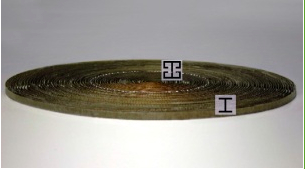中国南京东南大学国家重点实验室的研究人员声称,他们已经成功地利用一种人工电磁材料(Metamaterial,或称为超材料)创造了一个“电磁黑洞”,并模拟了微波频段的电磁黑洞实验,结果表明,电磁黑洞能够全向捕捉电磁波,引导电磁波螺旋式地行进,直至被黑洞吸收。在微波频段,黑洞对电磁波的吸收率可达到99%以上。在微波频段实验也验证了普渡大学科学家提出的“光学黑洞”理论方案。
这个人造“电磁黑洞”由谐振和非谐振型的超材料构成,外形上由60个带有复杂结构电路板的镀铜同轴环构成,每一层都是交替模式,应用电磁波在非均匀介质中的传播轨迹类比物质在引力场下弯曲空间中的运动轨迹,以此模拟黑洞的部分特性。
该“电磁黑洞”可捕获并吸收来自各个方向的辐射电磁波,并将能源转换成热量。东南大学崔铁军和程强主导设计和制作的吸收这个“电磁黑洞”,并称其为“全方位的电磁减震器”(omnidirectional electromagnetic absorber)。
新型人工电磁材料学科的创始人之一、伦敦帝国学院的Pendry博士在《科学美国人》的评论中认为,“这一新研究构建了吸收电磁波的全新方法,同时又可以控制电磁波的吸收辐射”。由于对电磁波的高效吸收性,电磁黑洞可望在电磁隐身等方面获得重要应用。
目前“电磁黑洞”试验仅适合于微波频段,研究人员写道,“理论和实验之间的结果一致, 显示了这种材料用于建造人工全方位吸收装置的优秀潜力。” “由于这个衰减核心可以将电磁波能量转化为热能,我们预计种装置将在热发射和电磁波吸收中有重要的应用。”
接下来,研究人员正计划开发一个吸收可见光的黑洞。
注:文中提及的“人工电磁材料”是一种可扭曲光线和其他电磁波的有序复合材料。
'Black hole' constructed from metamaterials
http://www.eet-china.com/ART_8800609251_617687_NT_44119a21_2.HTM
by R. Colin Johnson
Metamaterials absorbing incident microwaves, instead of diverting them around objects like an invisibility cloak, prompted Chinese researchers at Southeast University in Nanjing to claim they are created an "electromagnetic black hole."
The concentric circles of metamaterials that act as an almost perfect "black body"—absorbing nearly all incident microwaves and converting it them to heat—hold the promise of enabling novel antennas, electromagnetic-wave harvesters and super-efficient thermal emitters, according to the researchers.

Omnidirectional electromagnetic absorber uses concentric "I-shaped" and "Jerusalem cross shaped" metamaterials (see legends) that act like artificial black hole for microwaves.
Like invisibility cloaks that divert electromagnetic waves around objects, the Chinese omnidirectional absorbing device uses alternating fields of dielectrics and resonators—here I-shaped dielectric structures for its outer shell and Jerusalem-cross-shaped electric-field-coupLED(ELC) resonators for its inner shell, respectively. About 60 concentric layers were constructed on a metamaterial disk measuring about 100 millimeters in diameter. As a result, all nearly all incident microwaves were absorbed and converted into heat.
The layered dielectric cylinders combine a lossy inner core and a lossless outer shell with radially varied permittivity, causing electromagnetic waves hitting the cylinder to bend spirally in the shell region, then get trapped and absorbed by the lossy core, with nearly zero loss from scattering according to the researchers, hence creating the perfect omnidirectional absorber.
Next the researchers plan to demonstrate that their technique can also be used a visible wavelengths by fabricating a nanoscale version of the device.